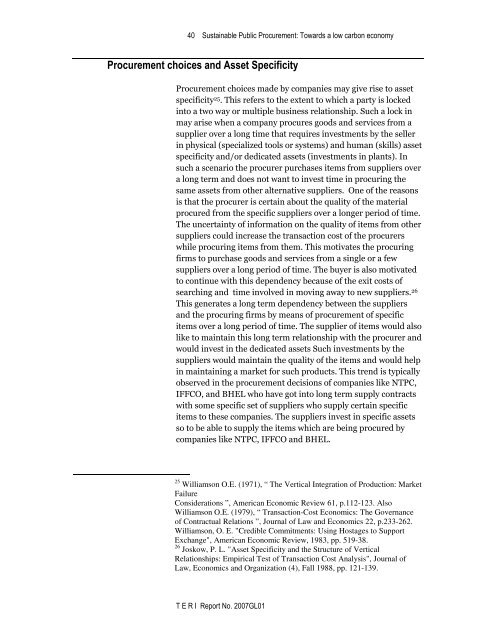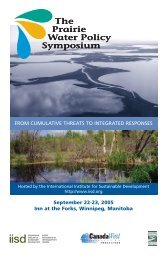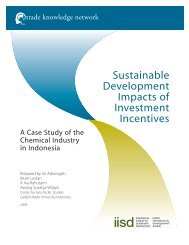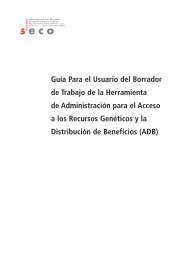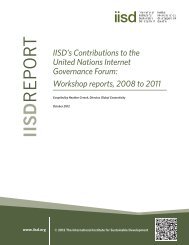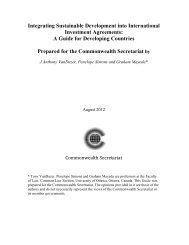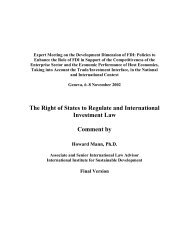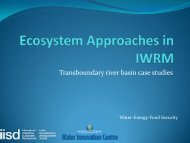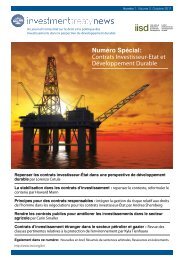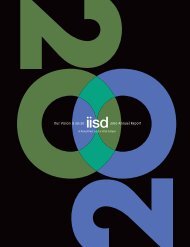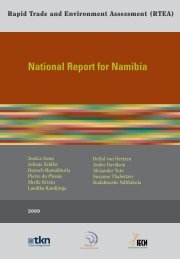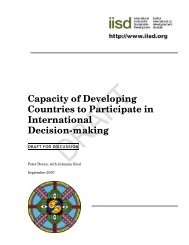Sustainable Public Procurement: Towards a lowâcarbon economy
Sustainable Public Procurement: Towards a lowâcarbon economy
Sustainable Public Procurement: Towards a lowâcarbon economy
Create successful ePaper yourself
Turn your PDF publications into a flip-book with our unique Google optimized e-Paper software.
40 <strong>Sustainable</strong> <strong>Public</strong> <strong>Procurement</strong>: <strong>Towards</strong> a low carbon <strong>economy</strong><br />
<strong>Procurement</strong> choices and Asset Specificity<br />
<strong>Procurement</strong> choices made by companies may give rise to asset<br />
specificity 25 . This refers to the extent to which a party is locked<br />
into a two way or multiple business relationship. Such a lock in<br />
may arise when a company procures goods and services from a<br />
supplier over a long time that requires investments by the seller<br />
in physical (specialized tools or systems) and human (skills) asset<br />
specificity and/or dedicated assets (investments in plants). In<br />
such a scenario the procurer purchases items from suppliers over<br />
a long term and does not want to invest time in procuring the<br />
same assets from other alternative suppliers. One of the reasons<br />
is that the procurer is certain about the quality of the material<br />
procured from the specific suppliers over a longer period of time.<br />
The uncertainty of information on the quality of items from other<br />
suppliers could increase the transaction cost of the procurers<br />
while procuring items from them. This motivates the procuring<br />
firms to purchase goods and services from a single or a few<br />
suppliers over a long period of time. The buyer is also motivated<br />
to continue with this dependency because of the exit costs of<br />
searching and time involved in moving away to new suppliers. 26<br />
This generates a long term dependency between the suppliers<br />
and the procuring firms by means of procurement of specific<br />
items over a long period of time. The supplier of items would also<br />
like to maintain this long term relationship with the procurer and<br />
would invest in the dedicated assets Such investments by the<br />
suppliers would maintain the quality of the items and would help<br />
in maintaining a market for such products. This trend is typically<br />
observed in the procurement decisions of companies like NTPC,<br />
IFFCO, and BHEL who have got into long term supply contracts<br />
with some specific set of suppliers who supply certain specific<br />
items to these companies. The suppliers invest in specific assets<br />
so to be able to supply the items which are being procured by<br />
companies like NTPC, IFFCO and BHEL.<br />
25 Williamson O.E. (1971), “ The Vertical Integration of Production: Market<br />
Failure<br />
Considerations ”, American Economic Review 61, p.112-123. Also<br />
Williamson O.E. (1979), “ Transaction-Cost Economics: The Governance<br />
of Contractual Relations ”, Journal of Law and Economics 22, p.233-262.<br />
Williamson, O. E. "Credible Commitments: Using Hostages to Support<br />
Exchange", American Economic Review, 1983, pp. 519-38.<br />
26 Joskow, P. L. "Asset Specificity and the Structure of Vertical<br />
Relationships: Empirical Test of Transaction Cost Analysis", Journal of<br />
Law, Economics and Organization (4), Fall 1988, pp. 121-139.<br />
T E R I Report No. 2007GL01


